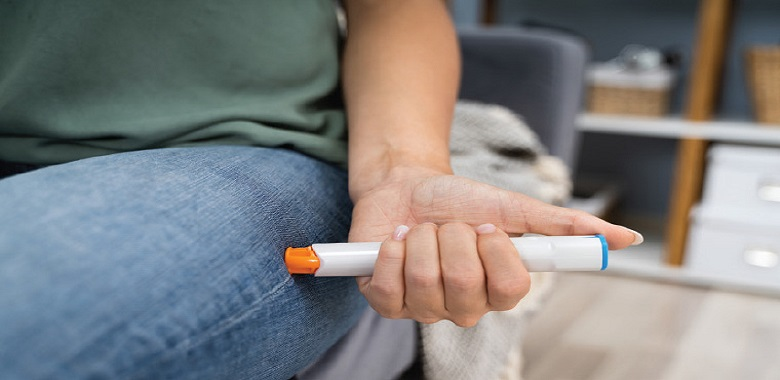Anaphylaxis is a medical emergency that is defined by the sudden onset of symptoms involving several organ systems. Adrenaline has been used as a first-line treatment for anaphylaxis without evidence of serious adverse effects. According to the European Academy of Allergy and Clinical Immunology (EACCI) guideline, recommendations for the use of Adrenaline in the treatment of anaphylaxis are as follows:
1. Intramuscular Adrenaline is the first-line treatment of anaphylaxis, which should be administered immediately in the mid-thigh area.
However, in cases of refractory respiratory distress or hypotension, intramuscular Adrenaline may not be effective; therefore, intravenous Adrenaline should be used.
2. In the community, Adrenaline autoinjectors are recommended as the first-line of treatment for anaphylaxis.
3. Pharmacokinetic data should be provided for each Adrenaline autoinjector because the Adrenaline autoinjector product are not interchangeable.

i. Absolute indications for Adrenaline autoinjectors:
- A history of food, latex, or aeroallergen-induced anaphylaxis.
- Prior exercise-induced anaphylaxis.
- Prior idiopathic anaphylaxis.
- Co-existing unstable or moderate to severe, persistent asthma and a food allergy.
- Hymenoptera venom allergy in untreated patients with more than cutaneous/mucosal systemic reactions or high risk of re-exposure.
- During and after hymenoptera venom immunotherapy (VIT), in patients with more than cutaneous/mucosal systemic reactions, if risk factors for recurrence are present.
- In adults with a history of a systemic reaction associated with underlying systemic mastocytosis. Children with blisters, severe skin involvement (>50% body surface) and elevated basal serum tryptase levels (>20 ng/ml) in the first 3 years of life.
ii. Adrenaline autoinjectors should be prescribed with any of the following additional factors (if more than one is present):
- Prior mild-to-moderate food allergy associated with anaphylaxis in the patient’s region (e.g., peanut and/or tree nut, cow’s milk, seafood depending on triggers for anaphylactic reactions in that area).
- Teenagers or young adults with a food allergy with a history of mild-to-moderate reactions.
- In the case of away from medical support or prolonged foreign trip and a past mild-to-moderate allergic reaction to a food, hymenoptera venom, latex, or aeroallergens.
- Prior mild-to-moderate allergic reaction to food traces.
- Hymenoptera venom or drug allergy in patients with more than cardiovascular disease and cutaneous/mucosal systemic reactions.
- Oral immunotherapy for food allergy.
a) The recommended dose of intramuscular Adrenaline autoinjectors:
- For children from 7.5 kg to 25-30 kg: 0.15 mg.
- For children from 25-30 kg: 0.3 mg.
- For adolescents and adults who are at risk of anaphylaxis: At least 0.3 mg.
- A patient who is overweight or has a history of life-threatening anaphylaxis: may benefit from the dose of 0.5 mg.
An autoinjector can be substituted with a prefilled syringe and a dose of 0.01 mg/kg of Adrenaline when an infant weighs ˂7.5 kg who is at risk of anaphylaxis. When a patient presents severe anaphylaxis in a clinical setting, a higher dose (such as 0.5 mg or 0.3 mg repeated for an older adolescent or adult) might be considered.